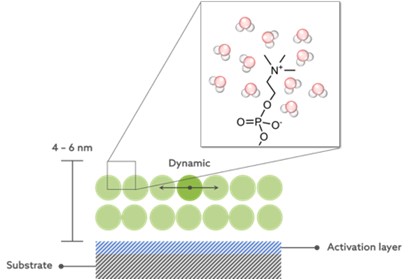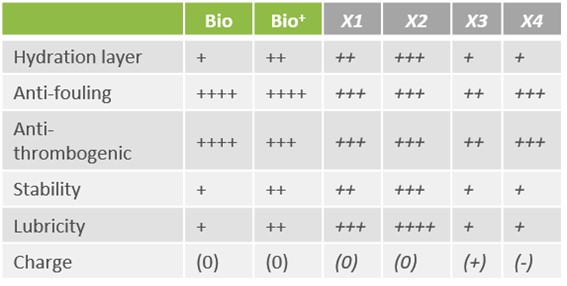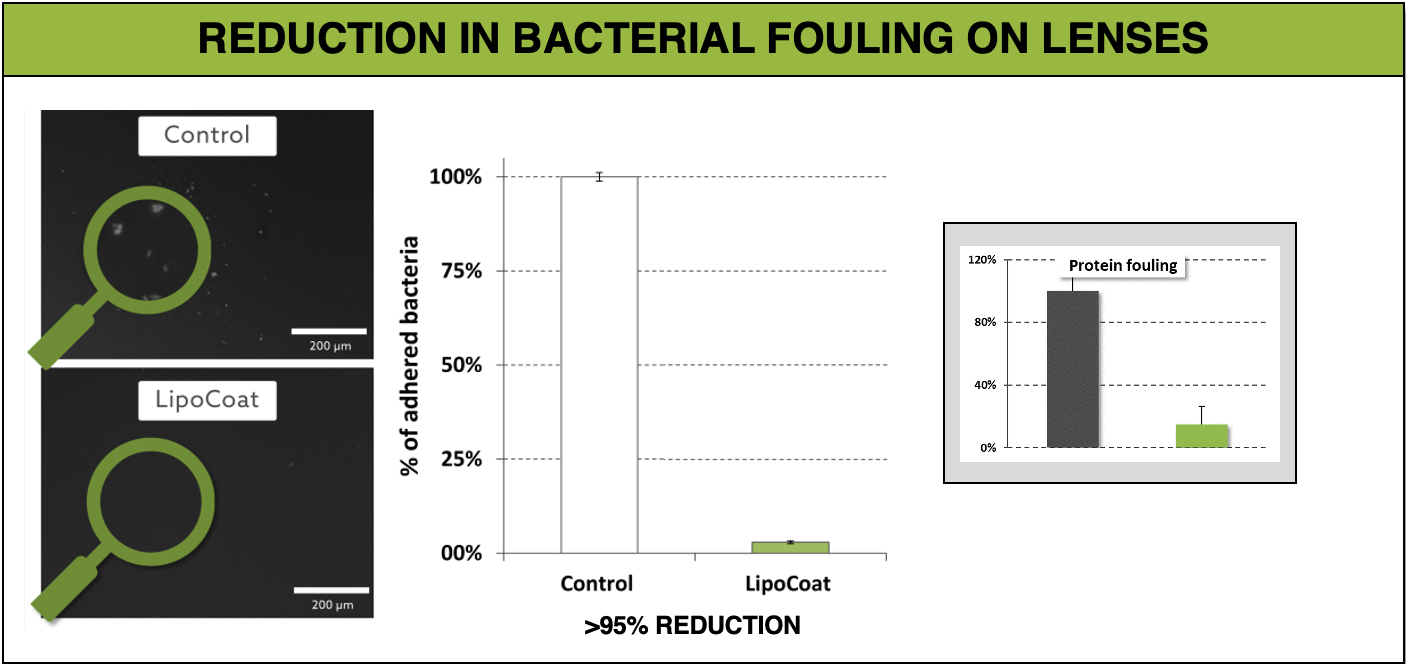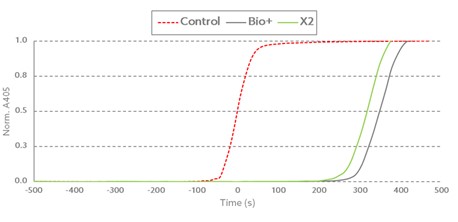Solution
SOLUTION
Research & Development

This technology is inspired by nature and mimics the cell membrane, more specifically the phospholipid bilayer. When applied, the coating self assembles to form a dynamic bi-lipid layer- 5 nm thin. This lipid layer is hydrophilic and can demonstrate certain properties once it is wet.
Figure: dynamic lipid bilayer on substrate
Properties
The coating can exhibit several properties simultaneously which can be tuned to the desired expression. We call this our tool box. With a range of formulations, hydrophilicity, stability, and lubricity can be adjusted to complement the inherent anti-biofouling and anti-thrombogenic nature of the coating.
An additional benefit is the coating’s ability to self-repair should scratches expose the substrate to the environment.
LipoCoat has collected extensive data on these properties.


Wetting
Data gathered with fluoroscopy and contact angle measurements, demonstrates full surface wetting.
Anti fouling
The data indicates a high degree (95% reduction) of anti-fouling when an attempt is made to pollute the surface with bacteria and protein.
Anti thrombogenic
This experiment demonstrates that blood platelets cannot stick to the coated surface. An additional benefit is that we exercise control over the thrombogenic response.
Fig. reduced thrombogenicity
Fig. delayed thrombogenic response
Regeneration
The coating has a regenerative quality. If the surface is damaged the coating reassembles to correct the defect and restore uniformity. Data gathered with fluoroscopy demonstrates that a scratch on the surface can restore within 15 minutes.
Fig. coating regeneration


